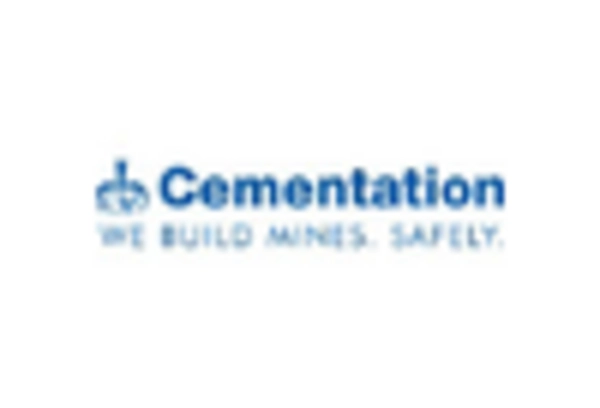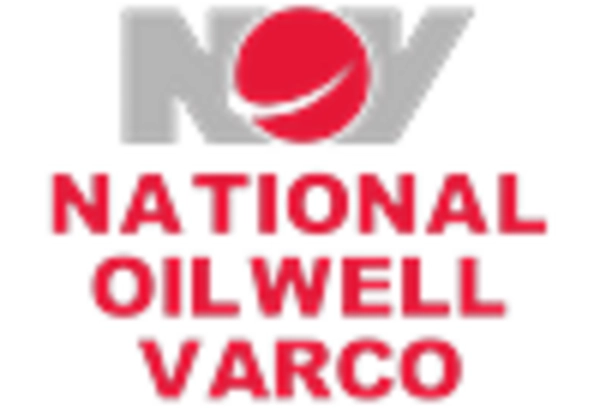Rising Demand for Oil and Gas
The well cementing market is experiencing a notable increase in demand driven by the resurgence of oil and gas exploration activities in the United States. As energy companies seek to enhance production from existing wells and explore new reserves, the need for effective cementing solutions becomes paramount. In 2025, the U.S. oil production is projected to reach approximately 12 million barrels per day, necessitating robust well cementing practices to ensure well integrity and safety. This rising demand is likely to propel the well cementing market, as operators prioritize reliable cementing to mitigate risks associated with wellbore stability and fluid migration.
Growing Investment in Renewable Energy
The growing investment in renewable energy sources is indirectly impacting the well cementing market. As the U.S. transitions towards a more diversified energy portfolio, the demand for natural gas as a cleaner alternative to coal is increasing. This shift necessitates the drilling of new natural gas wells, thereby driving the need for effective cementing solutions. In 2025, natural gas production is expected to reach approximately 100 billion cubic feet per day, highlighting the importance of reliable cementing practices to ensure well integrity. Consequently, the well cementing market is likely to benefit from this trend as operators prioritize cementing solutions that support the sustainable extraction of natural gas.
Infrastructure Development Initiatives
Infrastructure development initiatives in the United States are significantly impacting the well cementing market. The government's focus on enhancing energy infrastructure, including pipelines and refineries, is expected to drive the need for well cementing services. With an estimated investment of $1 trillion in infrastructure projects over the next decade, the well cementing market stands to benefit from increased drilling activities associated with these developments. As new wells are drilled to support infrastructure expansion, the demand for high-quality cementing solutions will likely rise, ensuring the structural integrity of wells and contributing to overall project success.
Increased Focus on Environmental Regulations
The well cementing market is influenced by the increasing focus on environmental regulations in the United States. Stricter regulations regarding emissions and waste management are prompting operators to adopt more sustainable cementing practices. This shift is likely to drive demand for eco-friendly cementing materials and techniques that minimize environmental impact. As companies strive to comply with these regulations, the well cementing market may experience growth in the adoption of sustainable solutions, which not only meet regulatory requirements but also enhance the overall reputation of operators in the industry.
Technological Innovations in Cementing Materials
Technological innovations in cementing materials are reshaping the well cementing market. The introduction of advanced cement formulations, such as lightweight and high-performance cements, is enhancing the efficiency and effectiveness of cementing operations. These innovations are particularly relevant in challenging environments, where traditional cementing solutions may fall short. The market is witnessing a shift towards the adoption of these advanced materials, which can improve wellbore stability and reduce the risk of cement failure. As operators increasingly seek to optimize their cementing processes, the well cementing market is likely to see a surge in demand for these innovative solutions.

















Leave a Comment